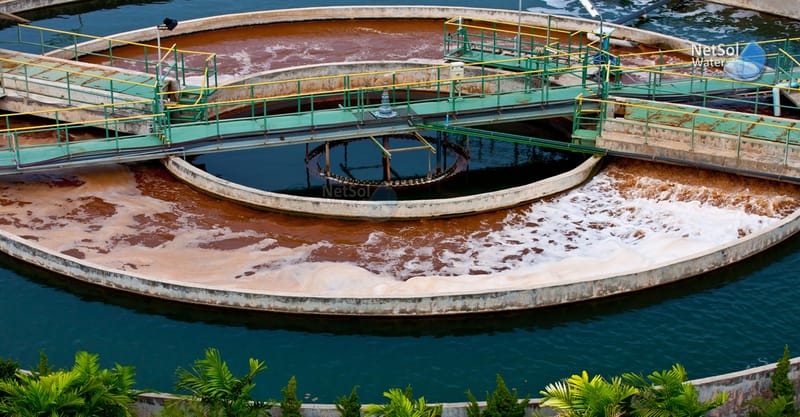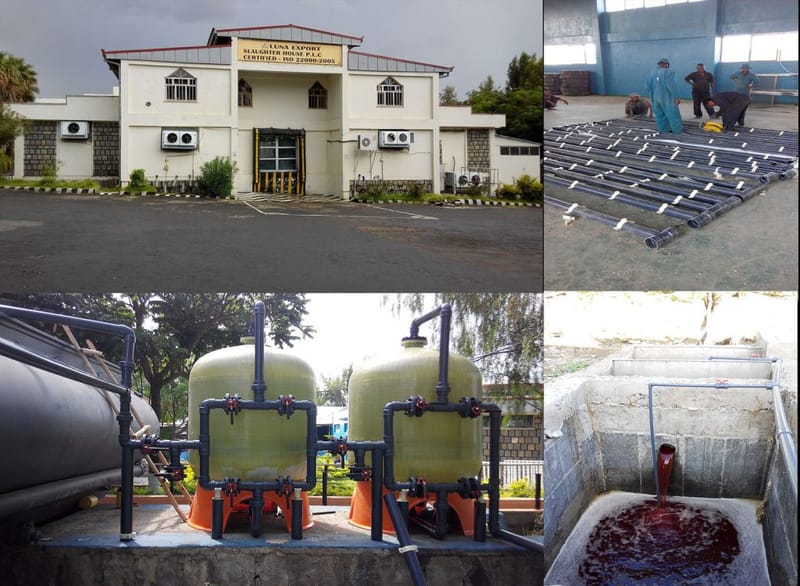A Mutual Commitment to Treat Slaughterhouse Wastewater Sustainable
Contents
- The Challenge: A Complex Cocktail of Contaminants
- The Multi-Stage Defense: A Collaborative Endeavor
- 1. Pre-treatment: The Vanguard of Defense
- 2. Chemical-Physical Treatment: Precision Engineering (Optional)
- 3. Biological Treatment: Nature's Remedial Touch
- 4. Disinfection: The Ultimate Safeguard - An In-Depth Look
- 5. Additional Treatment: Adapting to Local Needs
- A Collective Commitment to Sustainability
In the midst the complicated web of our contemporary society, certain operations go undetected by the general public, but they are essential to maintaining our surroundings and well-being. The processing of wastewater from slaughterhouses is one such crucial procedure that merits further investigation. It is a complicated and vital part of the food industry. Come along as we take a close look at this at times ignored area, investigating its complicated issues, challenges, and shared obligations.

The Challenge: A Complex Cocktail of Contaminants
Slaughterhouse wastewater presents a unique and multifaceted challenge, as it accumulates a diverse array of pollutants throughout its production cycle. Unlike domestic wastewater, it contains a complex mixture of contaminants, each posing its own set of environmental and health risks:
- Fats, Oils, and Grease (FOG): These stubborn substances not only clog sewer systems but also coat aquatic organisms, impairing their ability to breathe and survive.
- High Organic Content: Laden with proteins, carbohydrates, and other organic compounds, slaughterhouse wastewater exhibits elevated levels of Biological Oxygen Demand (BOD) and Chemical Oxygen Demand (COD), potentially depleting oxygen levels in water bodies and disrupting ecosystems.
- Pathogens: Untreated wastewater can harbour a variety of harmful bacteria, including E. coli and Salmonella, posing significant risks to public health if released into water sources.
The Multi-Stage Defense: A Collaborative Endeavor
Fortunately, modern wastewater treatment facilities employ a sophisticated array of technologies and processes to address these challenges effectively. It is a coordinated effort, where various treatment stages work in tandem to ensure the environmental sustainability and safety of our communities:

1. Pre-treatment: The Vanguard of Defense
Imagine a battle against pollution, and the pre-treatment stage serves as the vanguard of defense in the slaughterhouse wastewater treatment process. This crucial first line of defense employs meticulously designed techniques to filter out large, easily visible solids like bones, meat scraps, and feathers. These unwanted elements are removed through a screening process, preventing them from clogging or hindering subsequent treatment stages.
Furthermore, the sedimentation technique comes into play, acting like a settling pond. Here, heavier solids, akin to fallen soldiers in the fight against pollution, sink to the bottom for collection and disposal. Finally, a sophisticated weapon called Dissolved Air Flotation (DAF) is deployed. This technology utilizes tiny air bubbles as microscopic allies. These bubbles attach to FOG (fats, oils, and grease), which act like the enemy's hidden reserves, causing them to float to the surface for easy removal, much like skimming oil off a soup.
2. Chemical-Physical Treatment: Precision Engineering (Optional)
In scenarios where the enemy forces, represented by suspended solids, are particularly numerous, an optional but precise treatment method called chemical-physical treatment may be employed. This stage involves the strategic use of flocculants. These can be likened to special agents who infiltrate the enemy ranks, causing smaller suspended particles to clump together. This aggregation makes them easier to target and eliminate using the air flotation technique, effectively reducing their numbers and enhancing the overall effectiveness of the treatment process.
3. Biological Treatment: Nature's Remedial Touch
Once the larger and more easily targeted enemies are neutralized, it's time to call upon nature's remedial touch. The biological treatment stage utilizes the remarkable power of microorganisms as our allies. These microscopic warriors, housed in activated sludge systems or fixed-bed reactors, act like nature's decomposers, diligently breaking down the organic matter present in the wastewater. This significantly reduces the BOD (Biological Oxygen Demand) and COD (Chemical Oxygen Demand) levels, essentially weakening the enemy's ability to deplete oxygen in water bodies, thereby protecting aquatic ecosystems. However, it's crucial to remember that for these natural warriors to function optimally, the pre-treatment methods like DAF must have effectively minimized the presence of suspended solids, creating a suitable battleground for their success.
4. Disinfection: The Ultimate Safeguard - An In-Depth Look
Imagine the battle against slaughterhouse wastewater nearing its conclusion. The pre-treatment, chemical-physical (if needed), and biological treatment stages have weakened the enemy's forces significantly, removing large solids, FOG, and organic matter. However, just like in any war, scattered pockets of resistance might remain. In this case, these pockets are represented by pathogens, microscopic enemies like bacteria and viruses that can pose a serious threat to public health if they enter our water sources.
To ensure complete victory and prevent these residual threats from causing harm, the disinfection stage acts as the ultimate safeguard. This crucial final step employs various advanced weapons to eliminate any remaining pathogens and guarantee the safety of the treated wastewater. Here's a closer look at the available arsenal:
- Chlorination: This age-old technique neutralizes pathogens by using chlorine, a potent disinfectant. However, depending on the location, regulations regarding its application may differ, and its use may occasionally result in harmful byproducts.
- Ultraviolet (UV) Irradiation: This technique uses ultraviolet light—more precisely, a particular wavelength within the UV spectrum—to damage pathogens' DNA, making them dormant and incapable of proliferating. This process has a number of benefits, none of which are detrimental to the environment and produces no waste products.
- Ozone Treatment: Another powerful tool in the disinfection toolbox is ozone, a very reactive form of oxygen. It works by going after pathogens' cell walls directly, essentially eliminating them. Ozone treatment is very efficient, but it needs specific equipment and can use more energy than other methods.
- The choice of weapon in this final battle depends on several factors, including:
- Cost-effectiveness: Different methods come with varying costs associated with equipment, operation, and maintenance.
- Regulations: Local regulations might dictate specific requirements or limitations regarding the use of certain disinfectants.
- Effectiveness against specific pathogens: The target pathogens present in the wastewater might influence the most suitable disinfection method.
By carefully selecting and implementing the appropriate disinfection technique, we can ensure that the treated wastewater poses no threat to public health. This final step serves as a crucial safeguard, protecting communities from potential waterborne diseases and contributing to a healthier environment for all.
5. Additional Treatment: Adapting to Local Needs
The fight for clean water is not a one-size-fits-all endeavor. Depending on the specific local regulations and environmental considerations, additional treatment measures may be necessary to address unique challenges. One such example is nutrient removal, which can be crucial in areas where excess nitrogen and phosphorus in the treated wastewater could lead to eutrophication and harmful algal blooms. By implementing this additional treatment, we can prevent the treated wastewater from becoming a new threat to the delicate balance of aquatic ecosystems.
We can appreciate the critical role slaughterhouse wastewater treatment plays in safeguarding the environment and public health by being aware of its intricate details. It's a complex fight waged on many fronts, but with persistent technological advancements and ethical behavior, we can guarantee future generations a healthier and cleaner environment.

A Collective Commitment to Sustainability
Beyond the technical intricacies of slaughterhouse wastewater treatment lies a broader commitment to sustainability and environmental stewardship. By implementing effective treatment strategies, slaughterhouses not only fulfill regulatory requirements but also contribute to the broader goal of safeguarding our planet's natural resources. Collaboration with wastewater treatment specialists, adherence to best practices, and ongoing innovation are essential components of this collective effort toward a cleaner, healthier world.
This in-depth analysis of the wastewater treatment process from slaughterhouses sheds light on the intricate relationships that exist between science, technology, and environmental responsibility. When we are aware of the challenges and complexities involved, we can better appreciate the crucial role that wastewater treatment plays in preserving the health and wellbeing of communities and ecosystems. As we continue to work toward sustainability, let's recognize and celebrate the unsung heroes who tirelessly labor behind the scenes to protect our shared environment for coming generations.